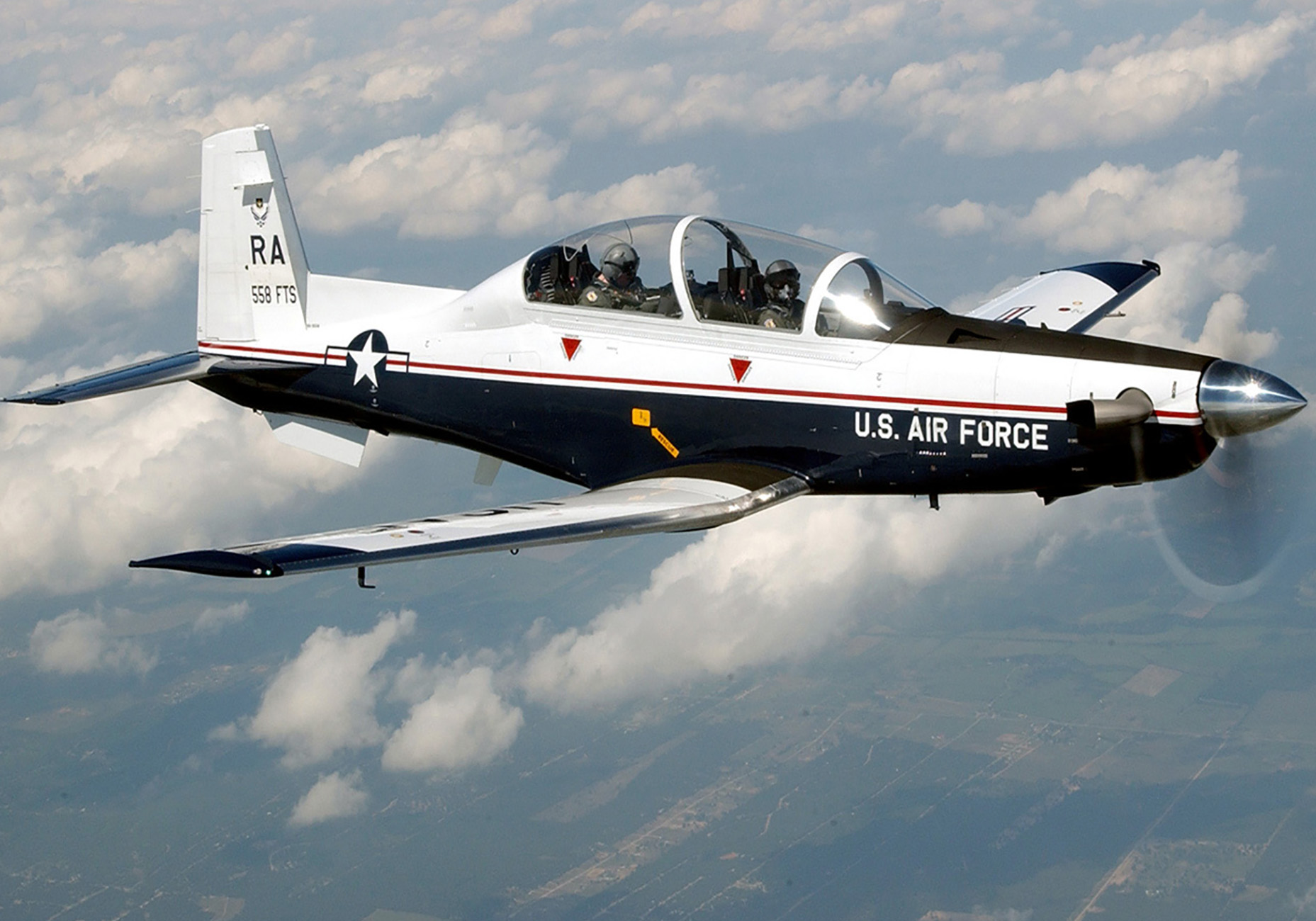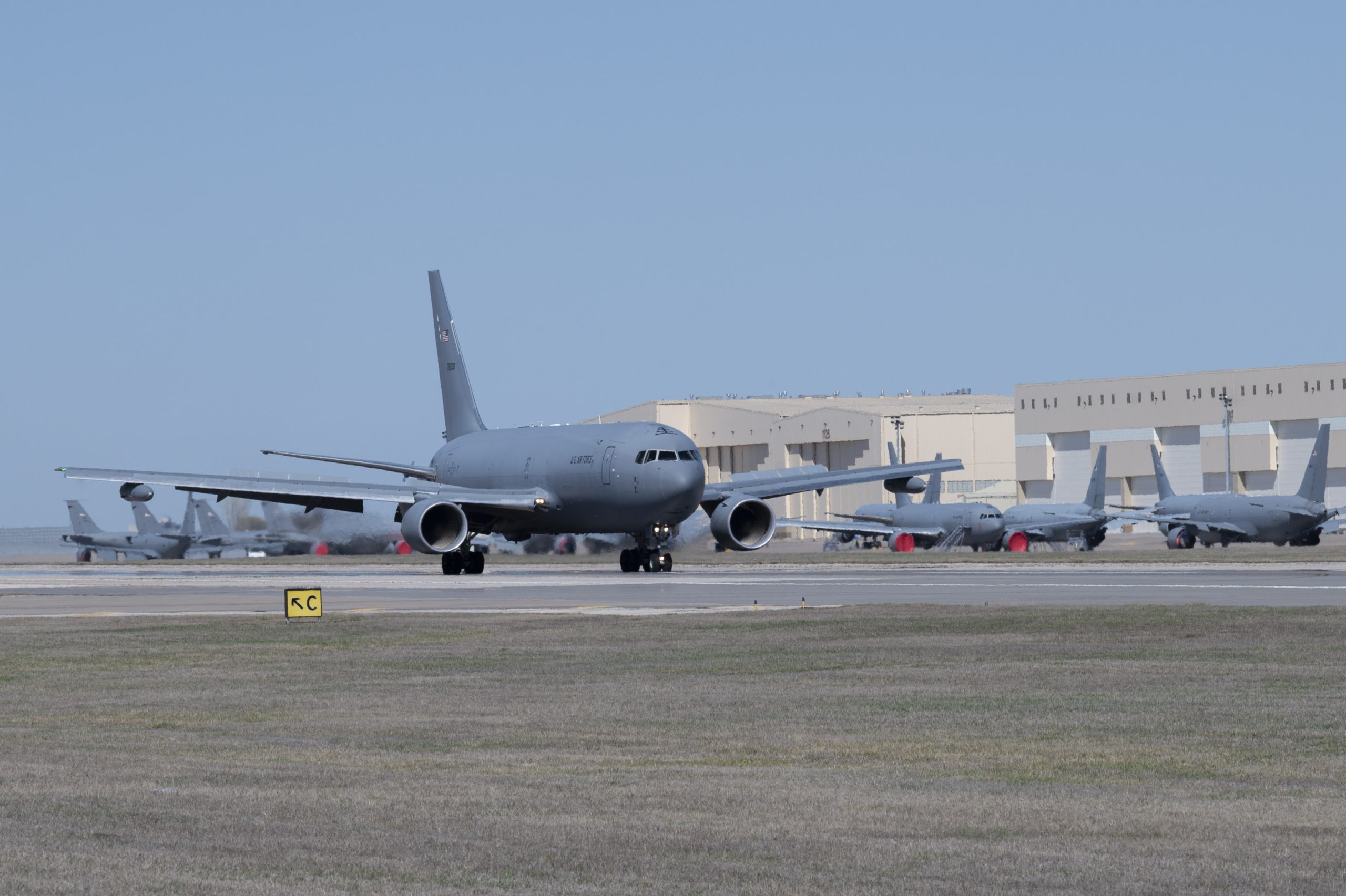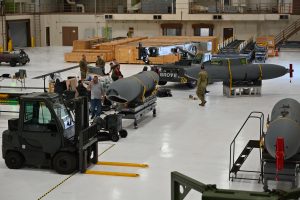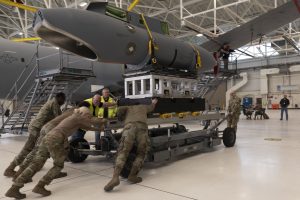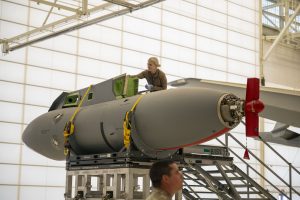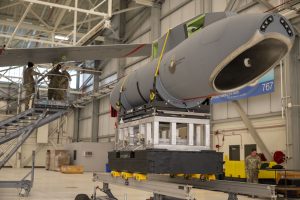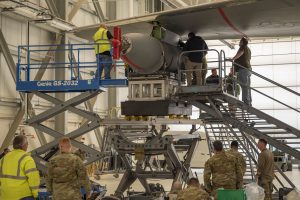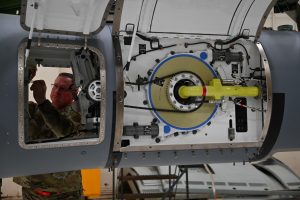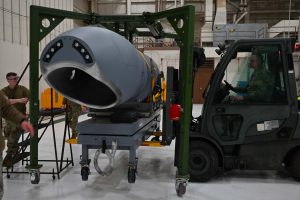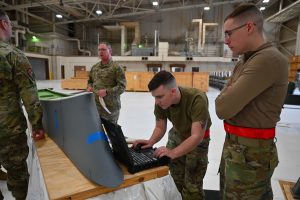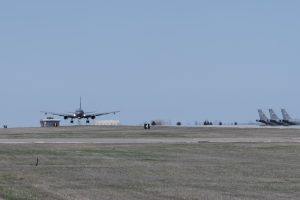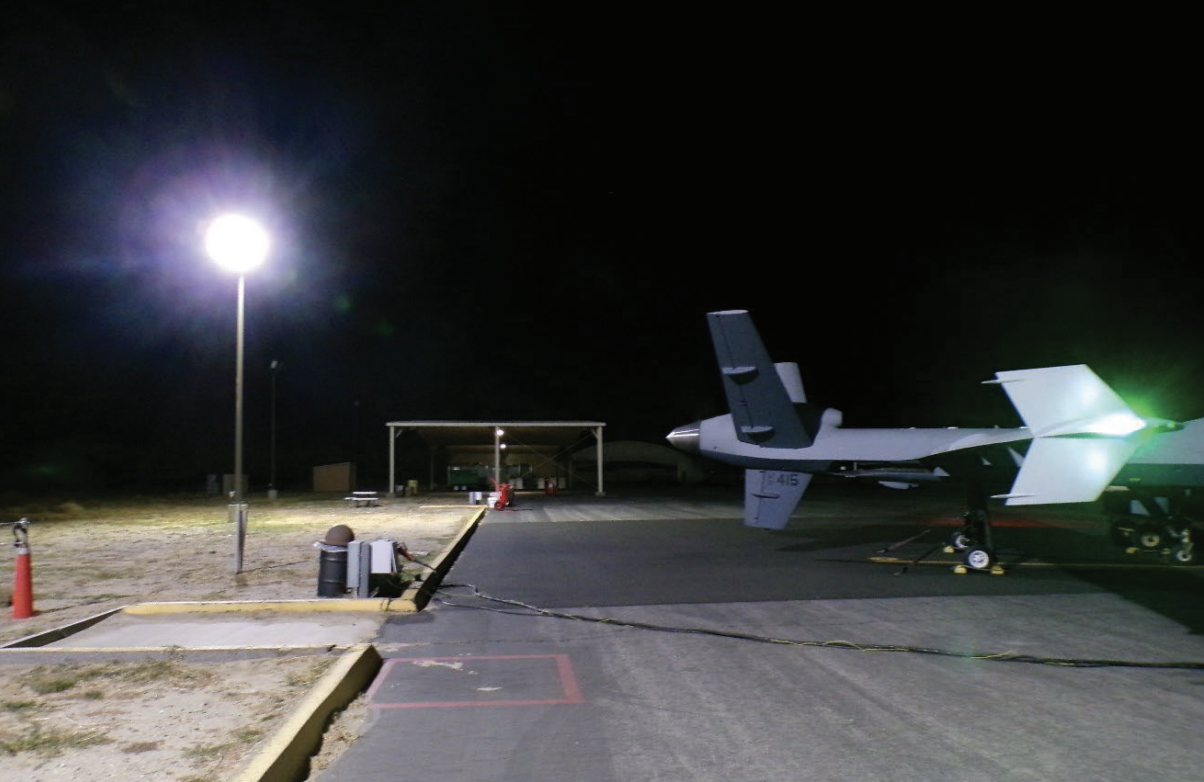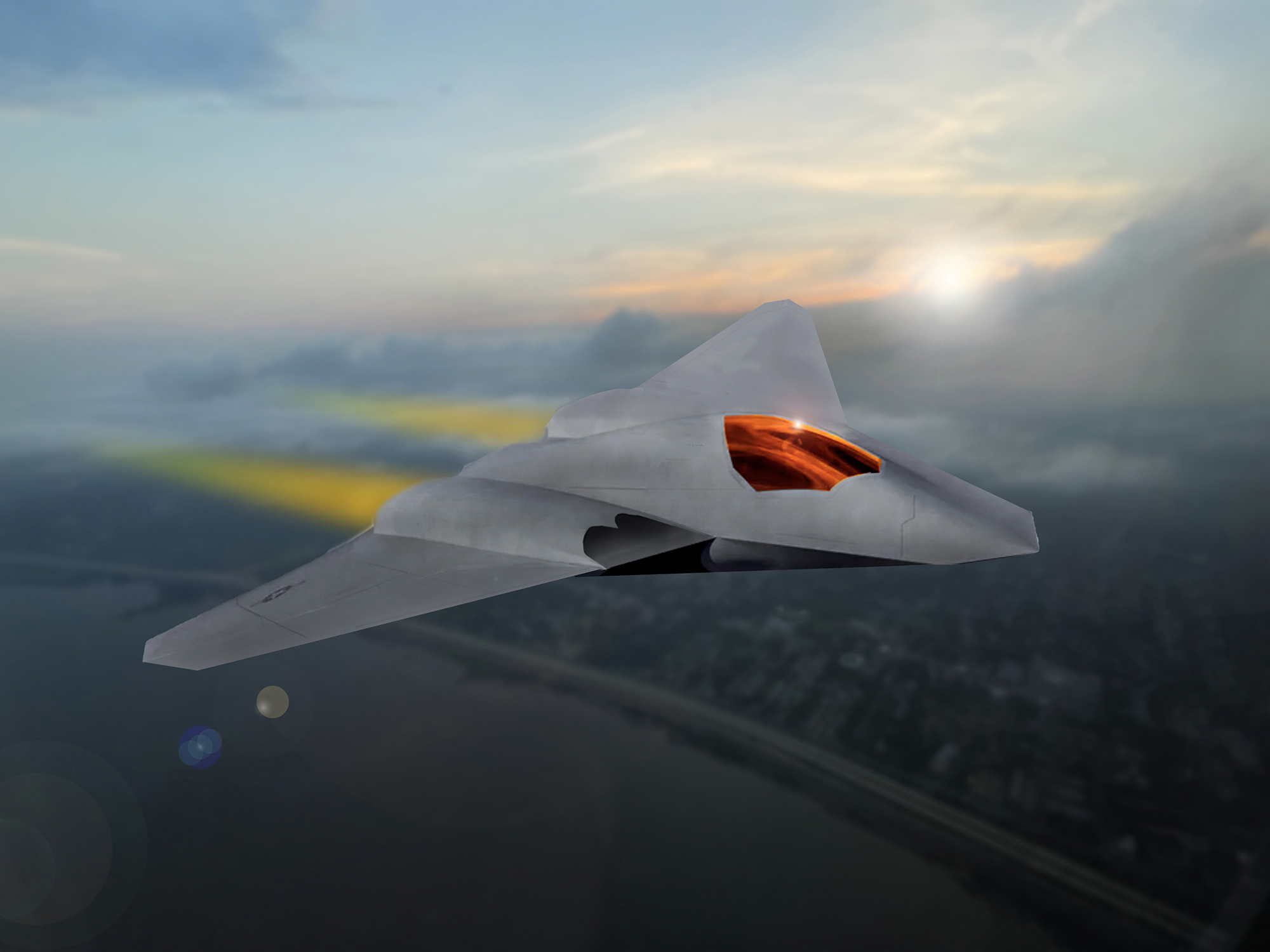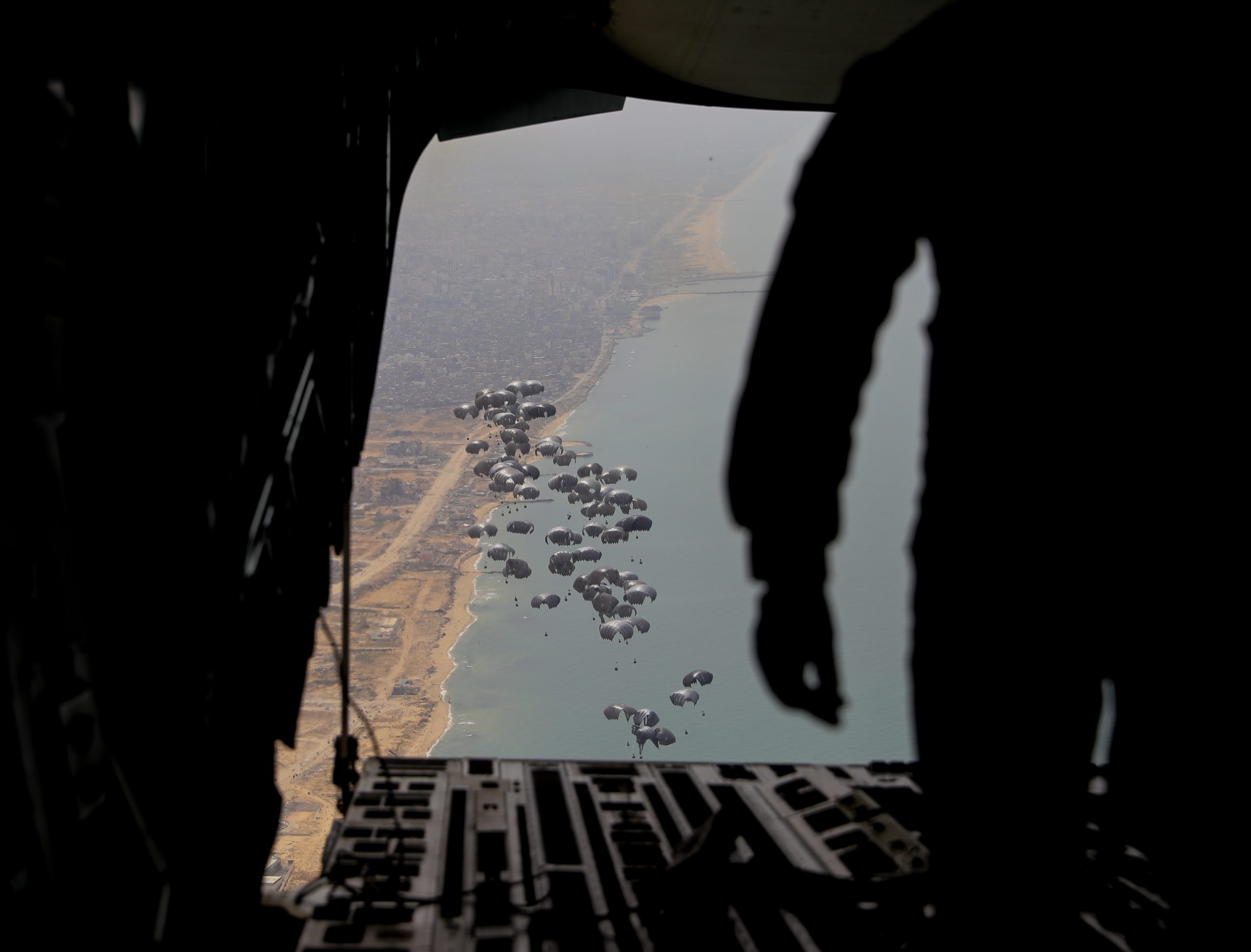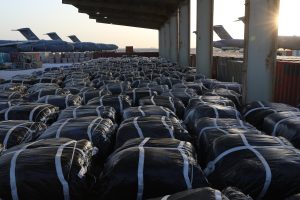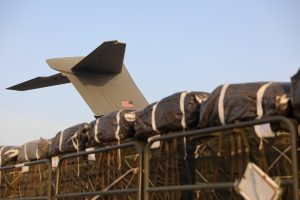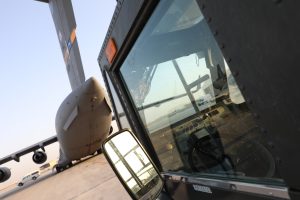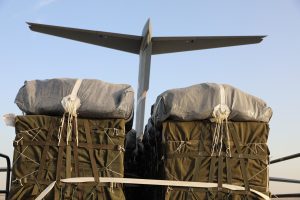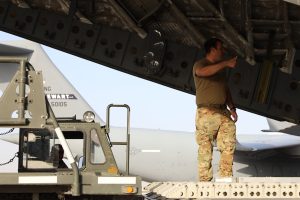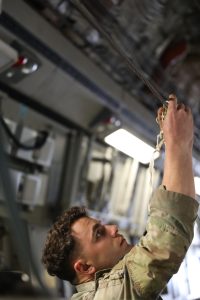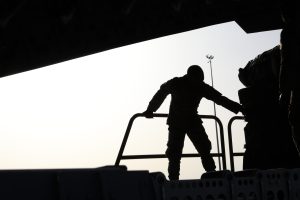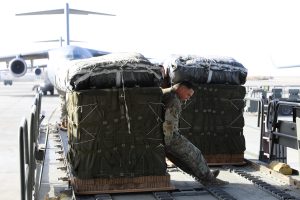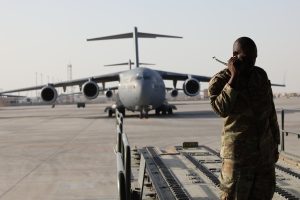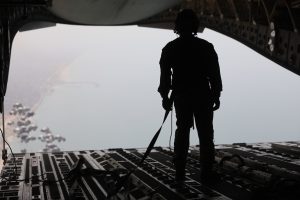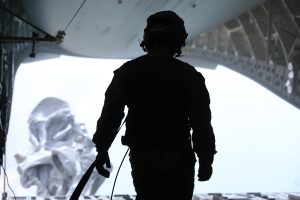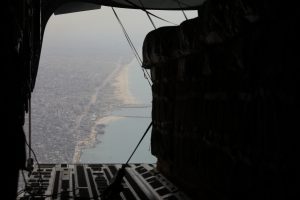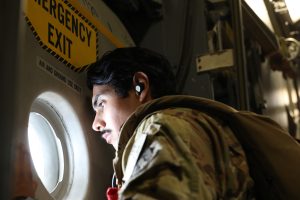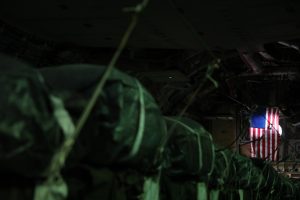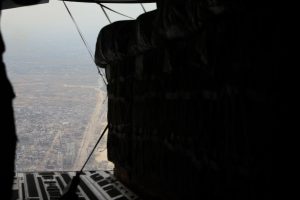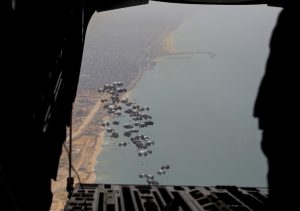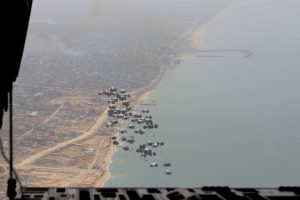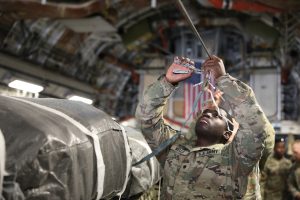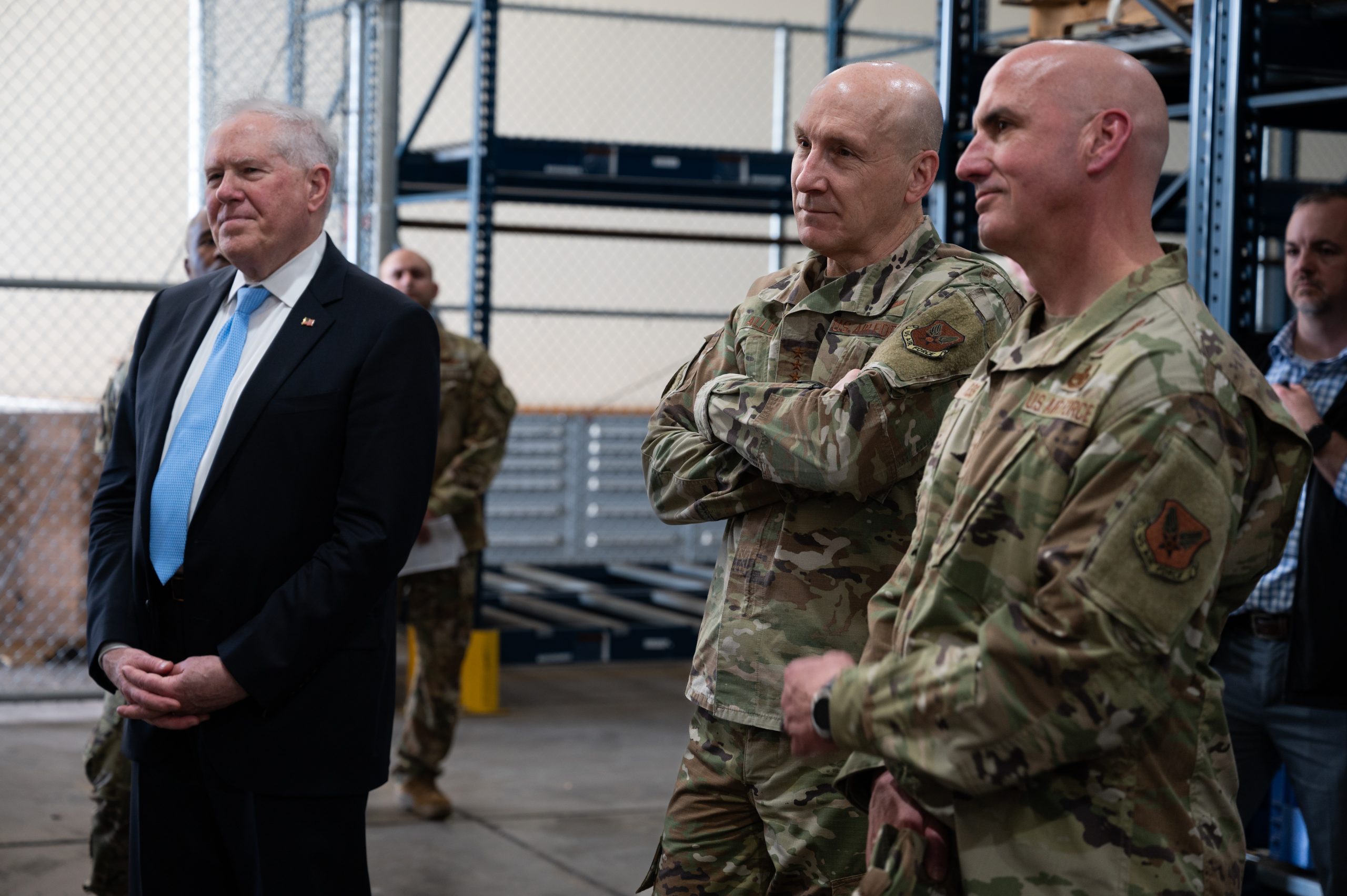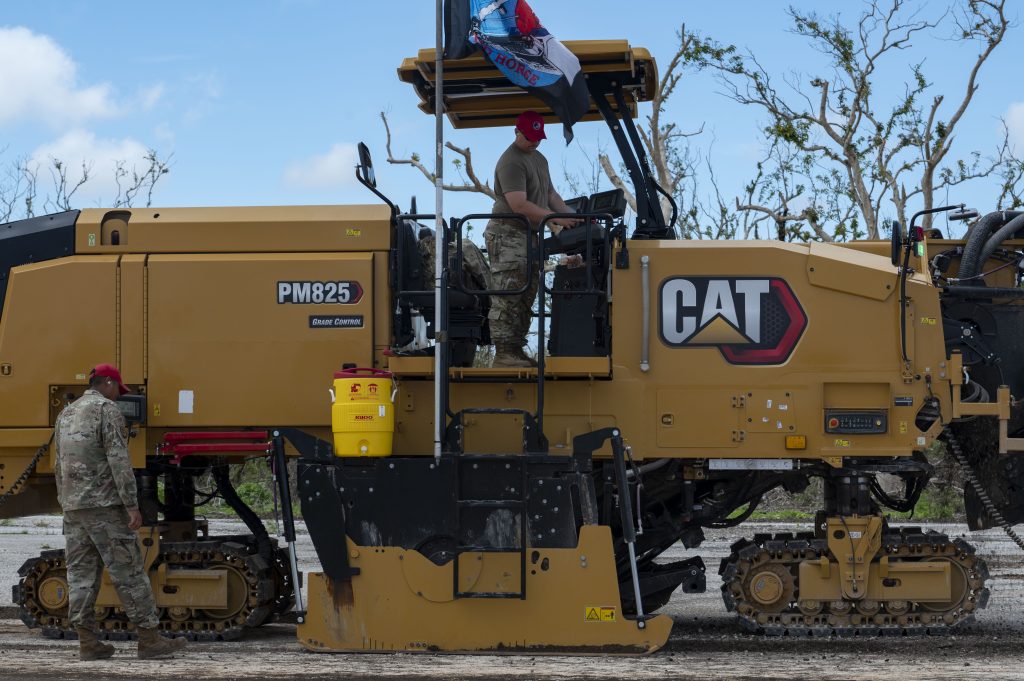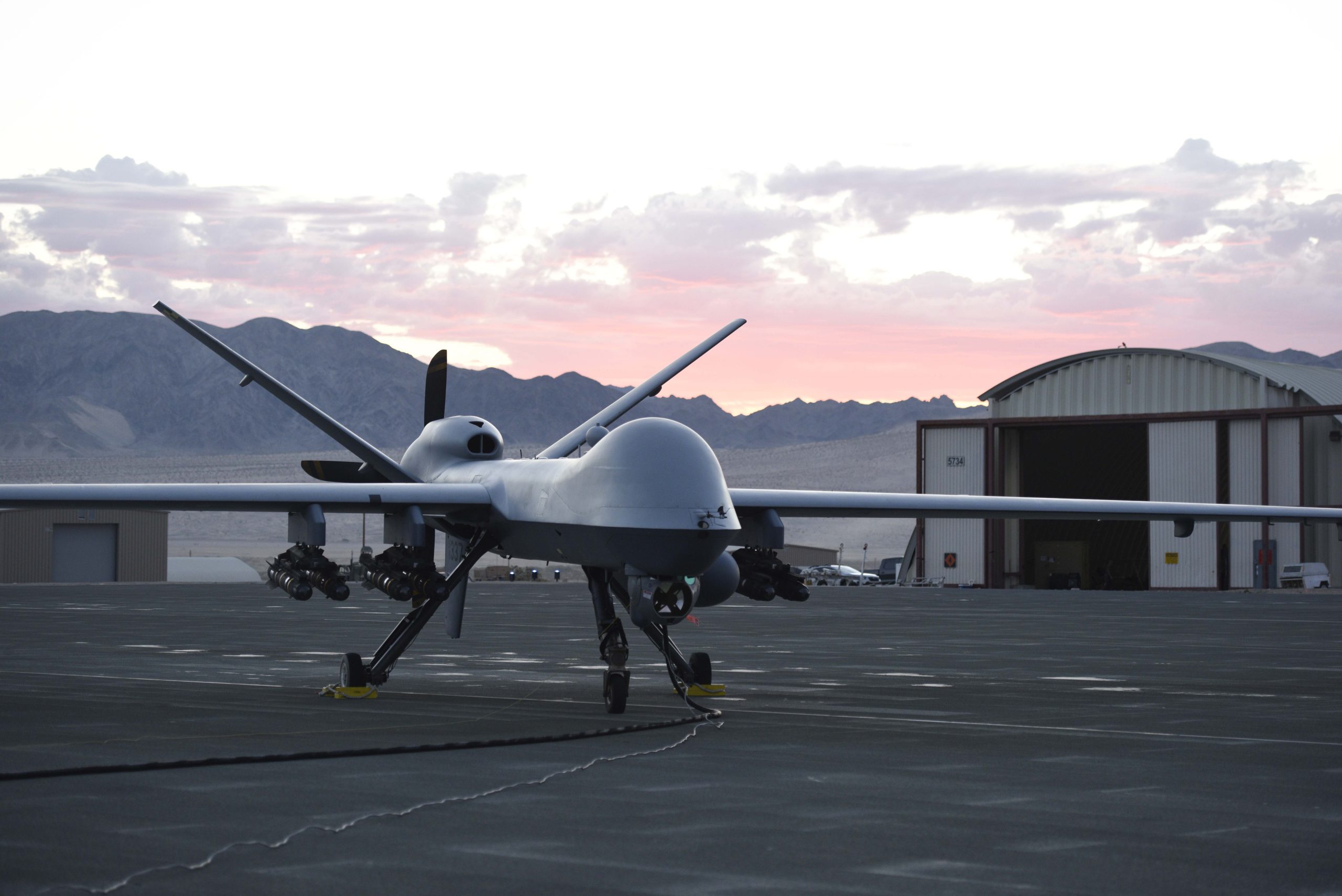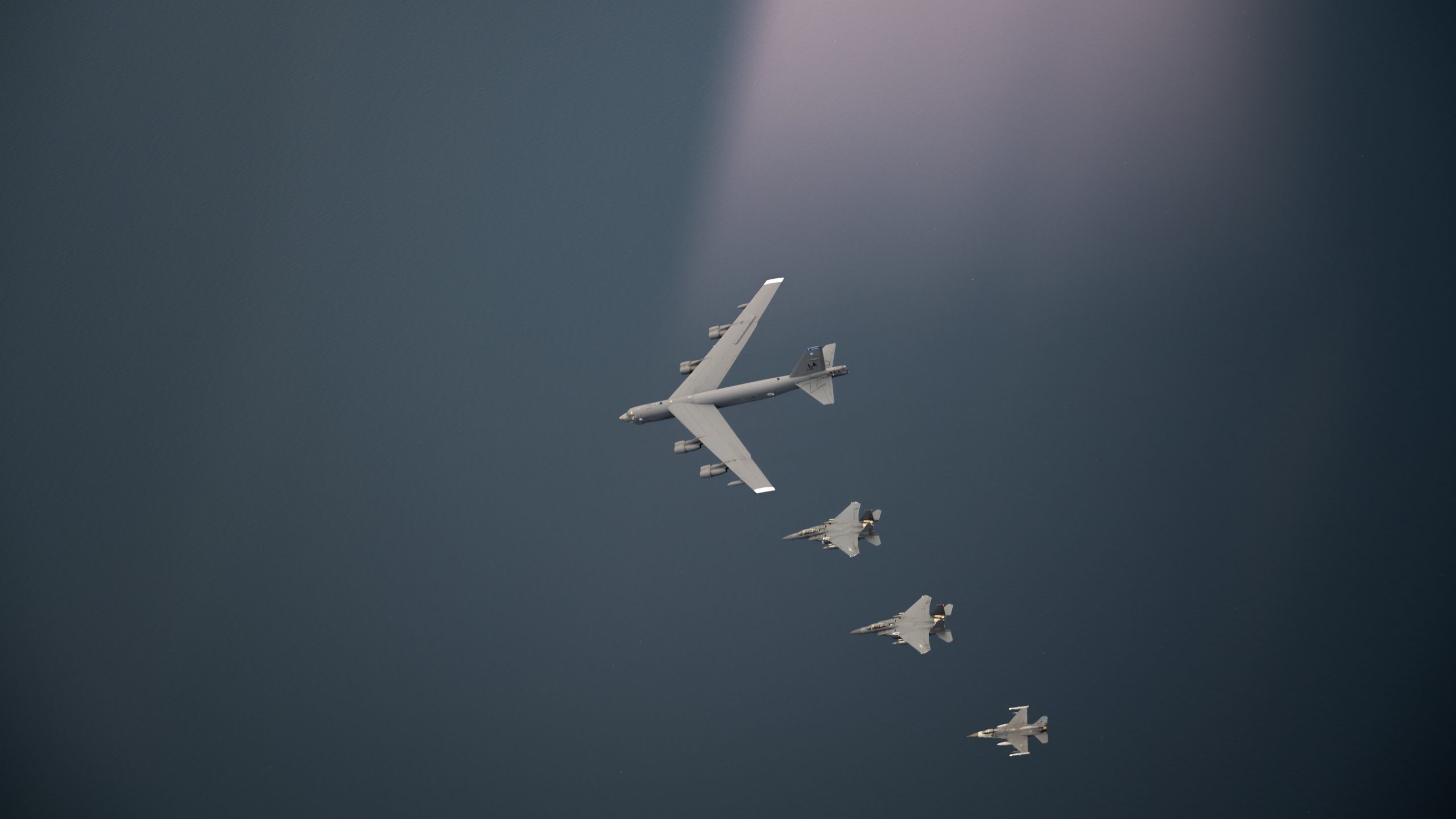Editor’s Note: This story was published April 5 and updated April 8 with more details about the emergency landing.
An Air Force T-6 Texan II made an emergency “belly flop” landing at Joint Base San Antonio-Randolph, Texas, on April 3 after its pilot declared an in-flight emergency. No one was injured in the incident.
“After the T-6 experienced a gear malfunction, the instructor pilot executed a gear-up landing in accordance with emergency checklists,” a spokesman with the 12th Flying Training Wing told Air & Space Forces Magazine. “The aircrew was unharmed, as a result.”
The turboprop aircraft, assigned to the 559th Flying Training Squadron of the 12th Flying Training Wing, executed the landing at approximately 11:30 a.m. local time on April 3. The flight crew, along with emergency responders and ground personnel, carried out emergency protocols following the landing. An investigation into the cause of the incident is currently underway, with a report on the extent of damage is pending.
“The safety of our personnel and the integrity of our equipment and facility are critical to our flight training mission,” the wing’s statement read. “We are committed to transparency and will provide updates as more information becomes available.”
The popular, unofficial Facebook page “Air Force amn/nco/snco” posted two pictures following the landing on April 3, depicting the aircraft having landed with its gear up. The 12th Flying Training Wing could not confirm the images’ veracity.
Gears-up landings are risky procedures, but Airmen have executed several in recent years due to gear malfunctions, engine failures, or other emergencies. Another training aircraft, a T-38C Talon jet, made an emergency wheels-up landing at Columbus Air Force Base, Miss., due to landing gear malfunction in November 2022; the pilot was unharmed. In February, an F-16 pilot was honored for skillfully handling an emergency wheels-up landing when his fighter lost a tire during takeoff from Aviano Air Base, Italy, in March 2022.
The T-6, a two-seater aircraft used to teach young Airmen training to pilots, has been involved in a few notable mishaps in recent years. In September 2018, a T-6 crashed into a nearby field in JBSA-Randolph, Texas, due to an improperly installed engine part. An instructor pilot and a student pilot safely ejected, avoiding injuries, but the aircraft was destroyed, resulting in a loss of $5.7 million.
A few months later, a T-6 from Sheppard Air Force Base, Texas, crashed in May 2019 during a routine instructor training mission. Both crew members ejected before the crash, sustaining minor injury, but the aircraft was destroyed. A follow-up investigation revealed that the crash was due to the instructor pilot’s fixation on the outside environment, not recognizing the aircraft was in a nose-high attitude with a slow airspeed, followed by a stall recovery checklist.
The T-6 Texan II is a joint Air Force/Navy undergraduate pilot training aircraft, developed under the Joint Primary Aircraft Training System program. Both the student and instructor can switch between positions, and operate the aircraft independently from either seat.
